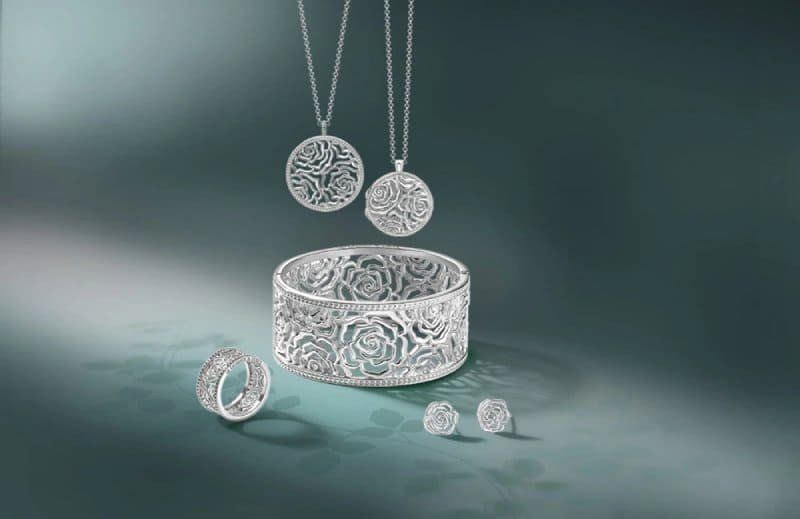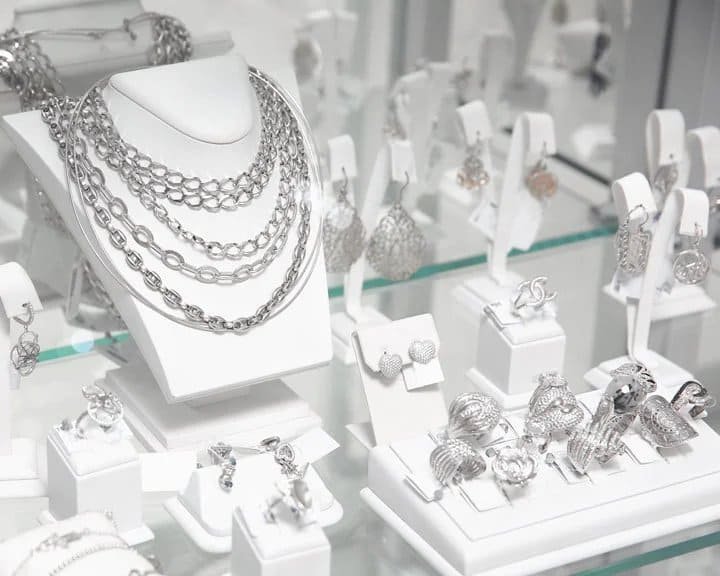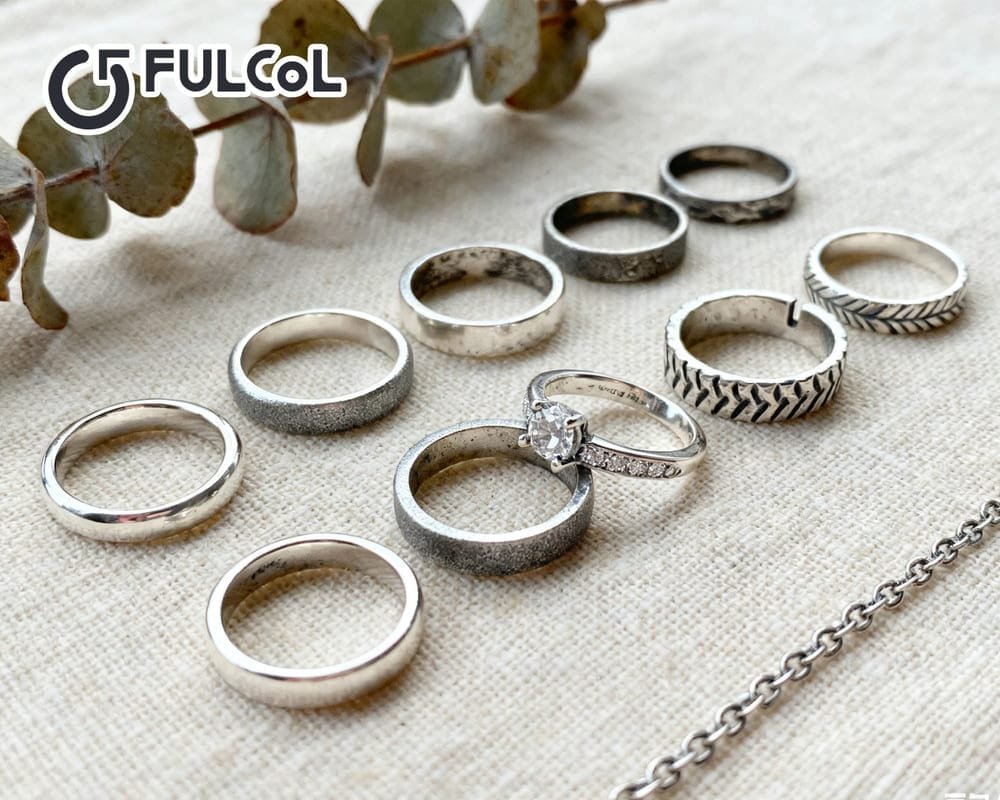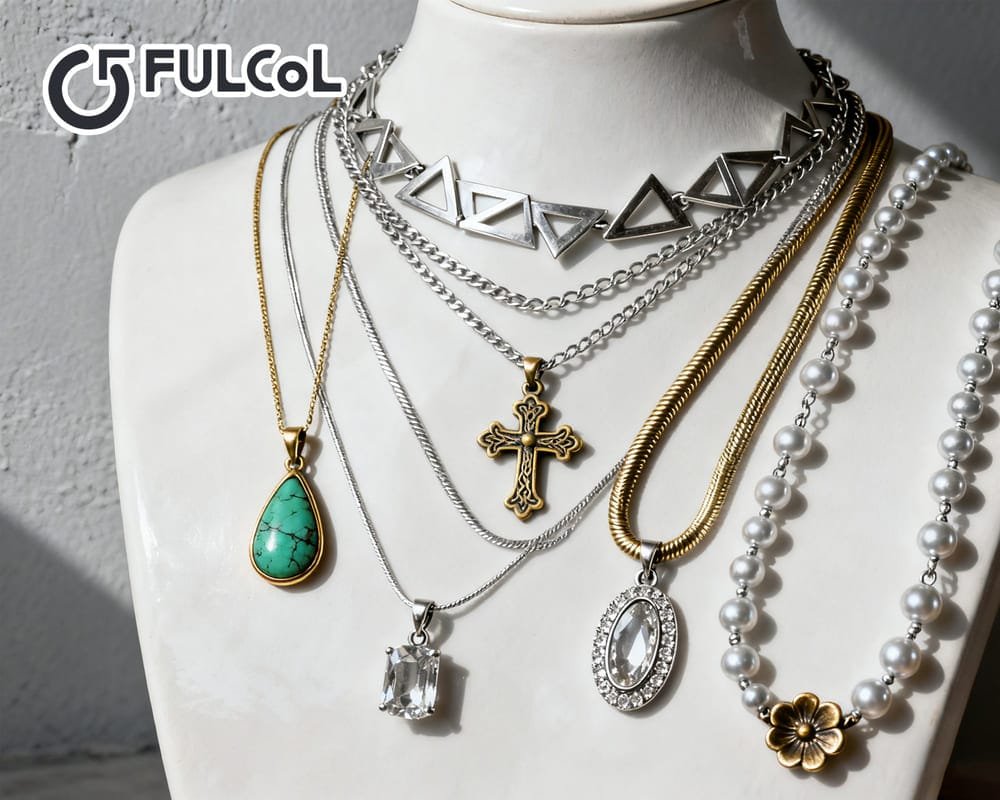In today’s dazzling world of jewelry, sterling silver jewelry has become the first choice for countless consumers for daily wear and special occasions with its warm metallic luster and relatively affordable price. From the silver ritual objects loved by ancient nobles to the simple earrings sought after by modern fashionistas, the story of silver runs through thousands of years and witnesses the continuous evolution of craftsmanship and aesthetics. Today, with the rise of the wave of personalized customization, small batch jewelry manufacturers can freely express their creativity in the plasticity of 925 silver, and can also use high-purity 990 silver to achieve mass production and quality control to meet the diverse needs of customers.
In such an era that takes into account both historical precipitation and innovative spirit, material selection is not only related to the appearance and touch of jewelry, but also directly affects production costs, processing difficulty and subsequent maintenance. 925 silver is widely favored by workshops and designers for its superior mechanical properties and economic costs. 990 silver, on the other hand, occupies a place in the high-end market with its brilliant luster and hypoallergenic properties that are almost pure silver.
Fulcol overseas jewelry manufacturers will start with the chemical composition and testing standards of silver materials, and deeply analyze the significant differences between the two in hardness, ductility, welding process and surface treatment. At the same time, we will combine field production experience to share process optimization solutions suitable for different scale production models. Whether you are a small-batch manufacturer focusing on creative design and pursuing quick response, you can get clear material selection ideas and practical operation guidelines that can be implemented, so that every piece of silver jewelry exudes unique charm.
Table of contents
Basic knowledge of sterling silver jewelry
Definition of sterling silver and alloy silver
In the jewelry industry, sterling silver usually refers to silver materials with extremely high silver content, but silver that truly reaches 99.9% purity in the chemical sense is soft and easy to oxidize, and is often used in scientific research or electronics. In order to take into account the strength and durability of jewelry, it is popular in the jewelry market to alloy silver with other metals (such as copper, nickel, zinc or silicon) to obtain alloy silver with high purity and good processing performance.
925 Silver (Sterling Silver): Silver content is 92.5%, the alloy part is mainly copper, and a very small amount of zinc or tin is added to improve strength and corrosion resistance.
990 Silver (Fine Silver): Silver content is 99.0%, and only about 1% of copper and other metals are contained, which is used to improve hardness and processability, while retaining a higher level of natural silver color.
999 Silver: Contains 99.9% silver, commonly known as “thousand-fine silver”, because of the highest purity and the most significant luster, but also because of the weakest metal toughness, it is rarely used alone for finished jewelry.
International Standards and Certification Mechanisms
In global trade, standardization is particularly important: only by meeting rigorous testing can you impress high-end markets and mature channels.
Assay Office (British Margin Bureau): Providing official inspection and stamping services since the 12th century, 925, 990 and 999 marks are all in its inspection catalog; only silver jewelry that has passed the inspection can be stamped with the official mark.
ISO 9001:2015 quality management system: If a jewelry manufacturer passes ISO 9001 certification, it means that it has a complete system support from raw material procurement, production and processing to quality inspection and shipment, which helps to enhance the confidence of international buyers in quality.
Legal signs of various countries: EU CE certification, US FTC jewelry authenticity label, etc., so that products can legally enter different regional markets and win the trust of consumers.
Common misunderstandings and precautions
Mistaking “999” for “perfect silver”: Although 99.9% silver sounds more advanced, the excessive purity reduces the toughness of the metal and is prone to scratches or deformation during daily wear and transportation.
Ignoring the risk of allergies to alloy components: Although 925 silver is the mainstream in the industry, if the formula contains nickel or a high proportion of copper, a small number of sensitive people may still experience skin discomfort. Manufacturers need to fully consider this when designing formulas or post-processing coatings.
Choice of detection method: In large-scale production, XRF spectral analysis is widely used because it is fast and non-destructive. However, when issuing authoritative reports or resolving disputes, traditional chemical methods such as fire assay are still required to ensure data accuracy.

Comparison of the composition and standards of 925 silver and 990 silver
Detailed explanation of alloy composition
925 silver
- Silver (Ag) 92.5%: Ensure the gloss and natural antibacterial properties of the main body of the jewelry.
- Copper (Cu) 6.8%: Mainly provides metal strength and moderate hardness.
- Nickel/Zinc/Tin <0.7%: Trace elements are used to improve lubricity and welding compatibility, but the nickel content must be strictly controlled to avoid allergies.
990 silver
- Silver (Ag) 99.0%: Brings a purer white luster and a more uniform reflective effect.
- Copper (Cu) 0.9%: Extremely improves hardness without affecting the color.
- Other trace alloys: Some manufacturers will control elements such as silicon or niobium to around 0.1% to optimize the wire drawing effect.
International testing standards and accuracy requirements
| Method | Accuracy range | Advantages | Disadvantages |
| Fire assay | ±0.05% | Traditional metal determination benchmark, the result has the highest credibility | Complex operation, high time cost; sample loss required |
| XRF spectral analysis | ±0.2% | Fast, non-destructive, suitable for online quality inspection | Limited recognition of ultra-trace elements; standard samples need to be calibrated |
| Acid test | ±1% | Simple, low-cost, suitable for preliminary screening | The error is large and can only be used as a pre-inspection method |
Market share and performance data
Global share: 925 silver accounts for about 65% of the silver jewelry market, 990 silver accounts for about 20%, and the rest are 999 and other special alloys.
Fatigue resistance: In the standard bending test, the average fatigue cycle of 990 silver parts is 12,000 times, while 925 silver can reach 15,000 times.
Color difference: Using a spectrophotometer to measure, the average whiteness value (L* value) of 990 silver is about 5 points higher than that of 925 silver.
Comparison of physical properties and processing technology
Hardness and wear resistance
In-depth discussion: 925 silver usually has a Rockwell hardness (HRB) range of 50–60 due to the high copper content of the alloy. This hardness makes it more wear-resistant in a variety of processes such as engraving, stamping, and mold forming, and can withstand high-intensity machining. In contrast, 990 silver has a hardness of about 40–50. Although it is easier to shape, it is prone to tiny scratches when cleaning with emery or steel wool.
Ductility, plasticity and process adaptability
Wire drawing and ring making: 990 silver can present a delicate and uniform metal texture when wire drawing, which is suitable for making thin chains or braided necklaces, while 925 silver is tougher and less likely to break when making rings and buckles.
Stamping and punching: 925 silver can undergo multiple high-pressure punching processes without stress concentration cracks. 990 silver, on the other hand, requires more effort in stamping clearance and mold design to prevent burrs and cracking.
Welding, polishing and surface treatment
In terms of welding, 990 silver has a high thermal conductivity, which makes the soldering point heat and cool faster. The welder needs to accurately adjust the temperature and dwell time. 925 silver has a higher tolerance rate and is easier for novice craftsmen to master. After polishing, 990 silver presents a pure bright white luster, while 925 silver has a delicate warm-toned reflective effect.
Oxidation and protective measures
Natural oxidation: The oxide layer formed on the surface of 990 silver is thinner, but the color is darker and grayer, which can be used as a design element to deliberately create a retro style.
Plating process: The most common PVD platinum plating and rhodium plating processes for 925 silver can effectively isolate the contact with air and chemical media, and increase the service life of the jewelry. If 990 silver needs high-end protection, the same process can also be adopted, but the cost is higher.

Visual effect and wearing experience
Color and visual impact
The unique high-purity luster of 990 silver is close to platinum, bright and cool, and is often used in high-end jewelry series (such as high-end custom earrings or high-end pendants) to show the ultimate texture. 925 silver presents a soft white light with a slightly warm tone, which can better set off the color of gemstones and is more inclusive when mixed with other metals (K gold, brass).
Wearing comfort and allergy risk
990 silver has almost no other metal alloys, so it is very friendly in terms of direct contact with the skin and rarely causes allergies.
If the alloy of 925 silver contains nickel, it should be plated or a nickel-free formula should be selected to reduce the risk of allergies.
When designing, a soft coating or silk gasket can be added on the inside to further improve comfort.
Practical guide for maintenance and cleaning
Daily quick cleaning: Use a coating-safe microfiber cloth to wipe gently every day to remove skin oil and sweat stains.
Deep care process: Soak the silver jewelry in diluted warm water and a small amount of neutral soap water for 10-15 minutes, then use a soft brush to clean the carvings and gaps, and finally rinse thoroughly and dry naturally.
Professional equipment recommendation: Small-batch jewelry manufacturers can configure laboratory-grade ultrasonic cleaners and special cleaning solutions for batch deep care. Consumers can use portable electric silver whisks.
Weight and touch experience
990 silver has a slightly higher density, which gives people a sense of stability when worn, and is suitable for pendants and large bracelets. 925 silver is lighter and suitable for creating thin and delicate earrings and thin chain necklaces, so that the wearer can hardly feel the heaviness of the metal.
| Start Your Custom Order | Email: info@fulcol.com | Number: +86 13055603907 |
After a systematic analysis of 925 silver and 990 silver in terms of composition, physical properties, processing technology and wearing experience, we can clearly see that the advantages and disadvantages of the material itself determine the performance and competitiveness of products with different positioning in the market.
First, for small studios or small-batch jewelry manufacturers close to the mass market that pursue cost-effectiveness and process diversity, 925 silver can provide better operational tolerance and economic return rate in hand engraving, fine stamping, welding and polishing due to its higher hardness and lower material cost.
In addition, 925 silver is more inclusive when paired with other metals (such as K gold, brass) or various gemstones, and can meet rich and varied design needs. For the high-end custom market or customer groups with extremely high requirements for comfort and purity, 990 silver is more suitable. Its higher silver content not only presents a cool white luster close to platinum, but also significantly reduces the risk of allergies during wearing.
For overseas jewelry manufacturers with large-scale production capabilities, the use of 990 silver combined with advanced surface treatment processes such as PVD rhodium plating can effectively improve brand premium and customer loyalty while ensuring product consistency and high-end texture. In actual implementation, manufacturers should make comprehensive judgments based on their own production scale, equipment level and target customers:
- In the processing stage, reasonably control the welding temperature and stamping pressure, and combine automation with manual craftsmanship to give full play to the physical properties of silver.
- In post-processing and maintenance, small-batch manufacturers can configure laboratory-level ultrasonic cleaning equipment, while large-scale production can introduce assembly-line PVD coating and automated polishing systems.
- In brand marketing, it is necessary to integrate the technical parameters, testing and certification, environmental protection recycling and other hard-core information of silver materials with craftsmanship and brand stories to create differentiated selling points to attract and retain target audiences. There is no absolutely superior or inferior silver material, only the material selection plan that best fits the brand positioning and production model.






